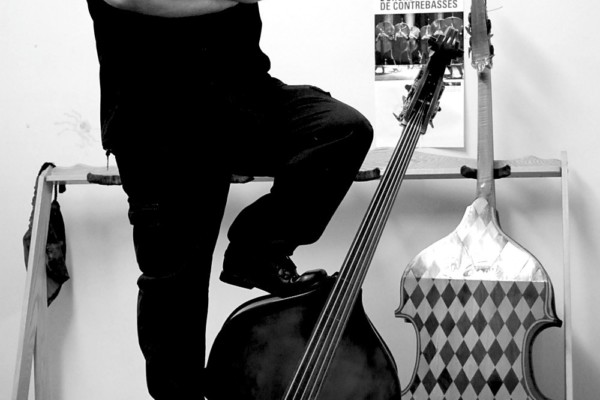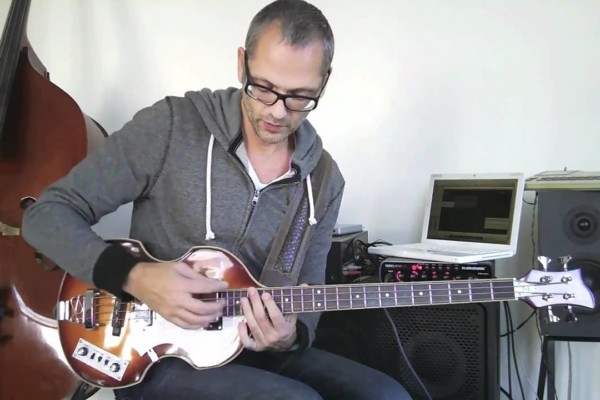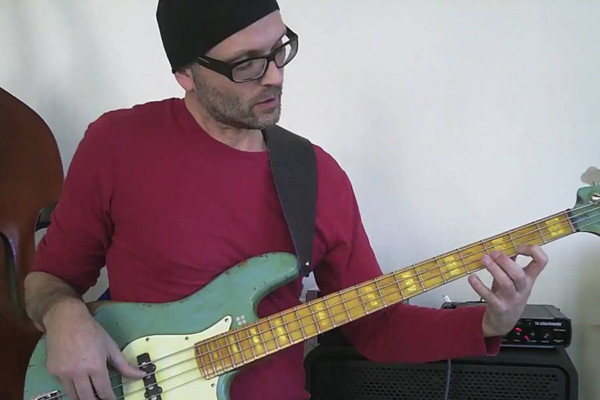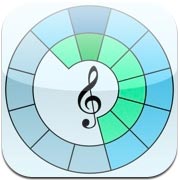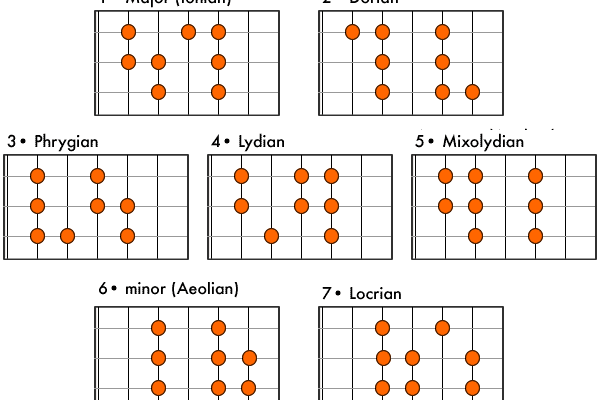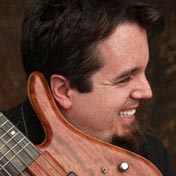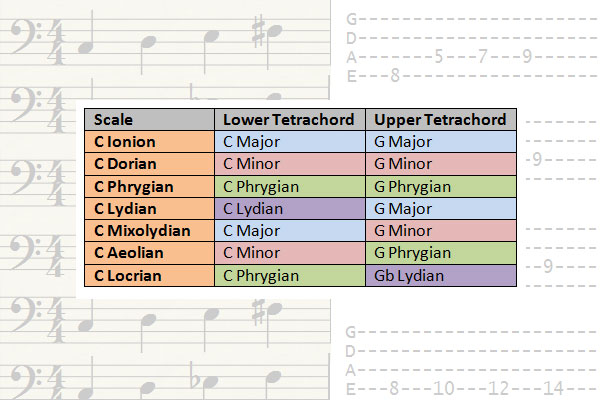Theory Archives - Page 5
Better Soloing: An Introduction to Key Center Improvising
There are many methods we can use to come upon satisfying note choices when improvising over a predetermined set of chord changes (i.e. a tune). One common way to approach note choice is using chord/scale theory, equating every chord to a scale. For example: A minor 7 = A dorian. It’s this approach that has people practicing all of their...
Bass Lesson: Expand Your Fretboard with Major Triads
In this new lesson, we’ll break down the concepts of utilizing triads in expanding your fretboard knowledge and control. We’ll explore triad inversions, different fingerings and using triads as target notes to achieve this goal. The video starts with a demonstration of a solo over a G Major chord. I’m playing a G Major triad. A triad is of course...
Harmonizing the Major Scale: Using a Number System on Bass
This week, I’m kicking off a new lesson focusing on the foundation of music – the major scale. Read over this lesson and then be sure to check out the video for a demonstration. Western music harmony is mostly based on the 7 steps of the major scale, and the chords built on the major scale are very common to...
Circle Theory: A Look at the Circle of Fifths Reference App for iOS
Spending time exploring the circle of fifths is a useful exercise for seeing the relationships between notes and key signatures. Circle Theory, by Artsiness, is a great iOS app for referencing and visualizing the circle of fifths. The app’s interface has the primary circle displaying the current Tonic note/key signature. The additional information options are shown in the inner circle,...
A Practical Guide to Modes and Scales
Q: What are modes and how do they work? A: I get this question a lot, but have only touched on it in past columns, as it relates to other questions. Here’s a straightforward guide to modes and scales to follow. Modes are a very simple concept but can take some time to really understand and get under your fingers...
Transcribing and Incorporating Bass Lines and Licks
Q: When I practice, I spend a lot of time transcribing different bass lines. After I’ve transcribed and learned to play it, I try to incorporate it by jamming along the record, using some of the cool ideas from original bass lines. Do you have some ideas and concepts for incorporating transcribed bass lines in your playing? A: I think...
Lesson: Scale Patterns from Tetrachord Combinations
We normally think of scales in terms of eight-note patterns and treat them as a unit. There are the standard modal forms for both major and minor, the bop variations, blues variations, but all of these still cling to the paradigm of an octave based scale unit (even if the total number of notes in the scale changes). As bassists...
Ask Damian Erskine: Theory and right hand technique
Q: Just wanted to ask you how can I get used to using the harmonized major and minor scales when soloing or using them when I’m playing a fill. I use the relative major or minor of the key I’m playing in regularly but I cant seem to get the other scale degree’s to work. My second question is how...
